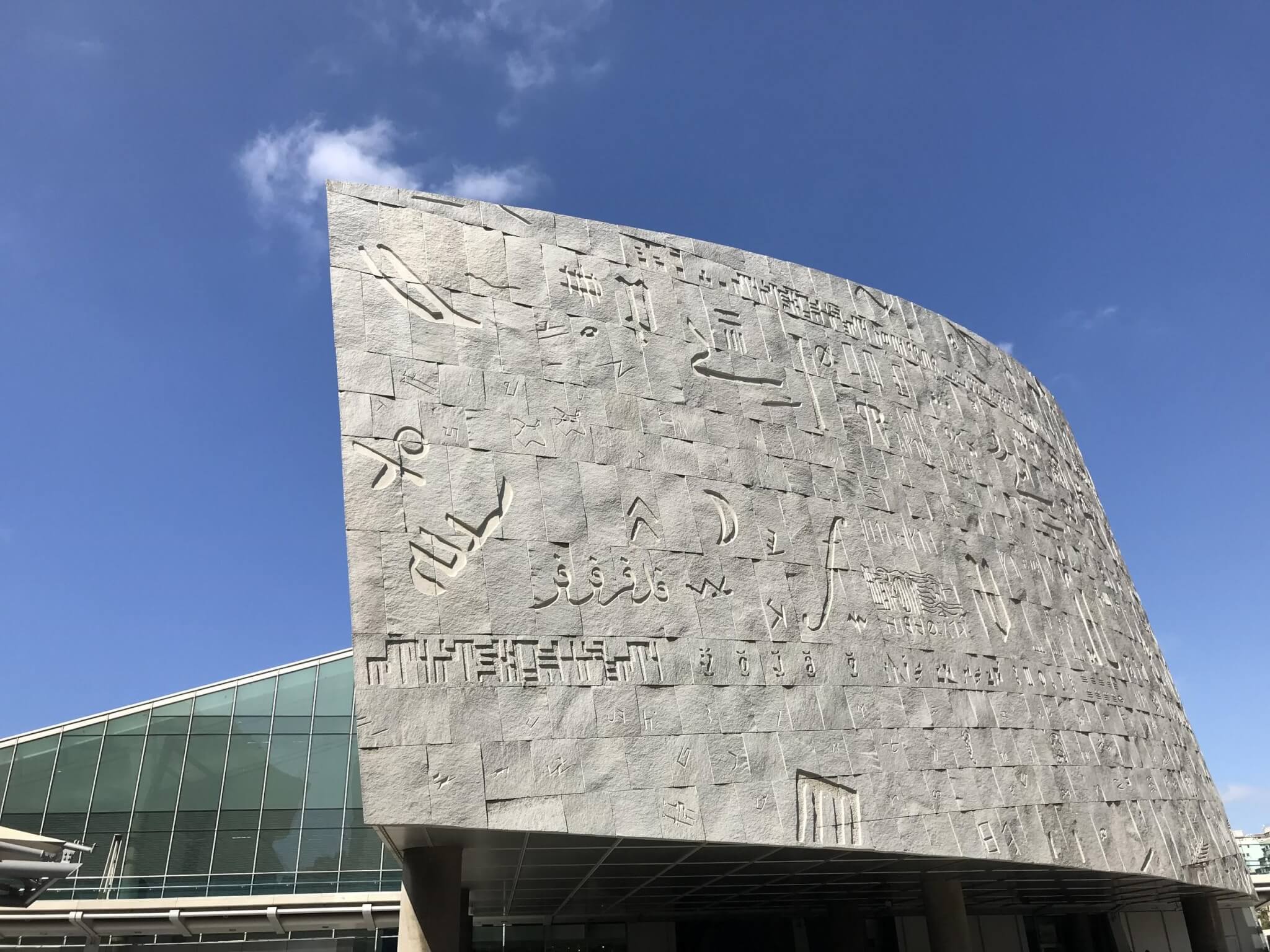The chroniclers of antiquity wrote that the Great Library of Alexandria held at its peak more than 400,000 scrolls on all manners of subjects, the most massive collection of knowledge in the ancient Mediterranean world. Despite the size of its holdings, this library definitely lacked one thing: a section for the blind and physically handicapped. Fortunately for the world, its modern successor has rectified that omission.
Founded in 2002, the Bibliotheca Alexandrina is the spiritual successor to the Great Library of ancient times, an edifice capable of holding eight million books in its main reading room alone. It is also the home of the Taha Hussein Library for the Visually Impaired, one of the major institutions in the Arab world that provides reading materials to the blind and visually impaired.
The library is named in honor of the blind Egyptian writer Taha Hussein, who holds an iconic place in the Egyptian literary pantheon; he is famed in the West for his autobiography, Al-Ayyam, and in Egypt he is known for his range of critical writings and novels. Unlike more primitive libraries, which might hold only basic braille reading materials, the Taha Hussein Library also offers audiobooks, text-to-speech software in English and Arabic on its computers that allows users to surf the web, and braille printers for sheet music and transcription from text to braille on-demand.
Earlier this month, I had the opportunity to visit both the Bibliotheca Alexandrina and the Taha Hussein Library myself. The Bibliotheca’s outer facade is a curved wall of grey stone with characters in a hundred and fifty different scripts from around the globe carved into it. In the afternoon sun, the light gleams over the stone and frames it against the chaos of the city surroundings. The facade sits atop a half-sunken glass disc meant to resemble the sun rising from the Mediterranean Sea, a boulevard away.
On the inside, the vast majority of the Bibliotheca’s space is taken up by the main reading room, which holds books in dozens of languages, though most of the collection is in either Arabic, English, or French. From the viewing deck you can look down upon hundreds of visitors and researchers taking advantage of the resources of the new library. The expansive room is roofed by a stunning lattice of glass and ivory concrete, and supported by tree-like pillars. The glass on the roof is shielded on the outside by “eyebrows” of concrete that allow light into the room without harming the vast collection of books. Along the threads of the lattices, blue and green light glows, meant to calm visitors and researchers alike.
The Taha Hussein library is entered from the main reading room, and houses ten computers, relics from an earlier age of braille printing, modern braille-transcription machines, and storage space for audiobooks. Besides these two collections, the Bibliotheca is home to a number of other small literary collections, four museums, and special exhibits on art and history. In its vast entirety, it proves itself a worthy successor in existence and ambition to the original library.
Guest Post by : Daevan


